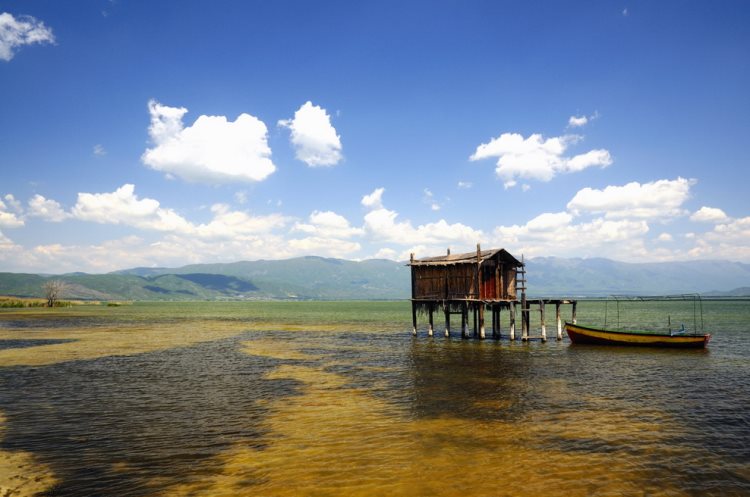
Dialing code: +389 (0)34
Postal code: 1485 Nov Dojran; 1487 Star Dojran
License plates: VE 000-XX
Coordinates: 41°10′45″N, 22°43′29″E
Website: www.dojran-info.com
The city of Dojran is located in the south-western part of the Republic of Macedonia, on the shore of Dojran Lake, 5 km from the border with the Republic of Greece. The city is settled at an altitude of 50m with the population of approximately 10.000 inhabitants and it has Mediterranean continental climate. The highway which leads to neighbouring Greece, passes by this municipality, whose main economy is tourism, fishing and agriculture.
The earliest settlement on the territory of Dojran existed since ancient times. The Greek historian Herodotus described the cottages on palisades on the lake coast where the inhabitants lived and supported themselves mainly by fishing. During the Ottoman rule, Dojran had 12.000 inhabitants, and resembled Thessalonica, so they used to call it ‘little Thessalonica’. During World War I, on the territory of Dojran the Thessalonica front was spread with the visible remains from that period which today, are the landmark and one of the main attractions in the region. The bombing in the WWI destroyed the town completely, and in its place today there is only one tourist settlement. The present day inhabitants moved to Nov Dojran. Today on the west coast of Dojran Lake, there are the two fishing communities, Old and New Dojran.
DOJRAN LANDMARKS
The Clock Tower
This monument was built in the 14th century. According to the legend passed down through many generations, the tower was built by Evrenos-beg, in honour of the conquest of Dojran. During the First World War, the tower was partially destroyed, and it remains in the same condition today.
The Hammam Spa
The ancient spa is located in the upper part of the city. The time of construction is not known. Only some parts of this tower have been preserved to the present day.
St. Elijah church
The church dedicated to St. Elijah was built in 1874 in the northern part of Dojran. The current state of the church are fragments of paintings, which suggest that the church walls were originally covered with frescos.
Mandra, The fisherman's Hut
This is is a small wooden cottage which lies above the lake. It is traditionally used for fishing by local people, and it is typical exclusively for this area, but these methods also exist in China. The bird species - Cormoran are used to help the fishermen which is a unique method for fishing and represents a real attraction for tourists.
Remains of WWI
The WWI Dojran battlefield on the hill above the old part of Dojran called Kale Tepe, is the main attraction for military buffs. This area was part of World War I Thessalonica front from 1915-1918, also known as the Macedonian front. Due to a long-term presence of the Bulgarian on one side, and French and British troupes on the other side of the battlefield, today there are many remains from bunkers, military nests and trenches carved into the rocks.